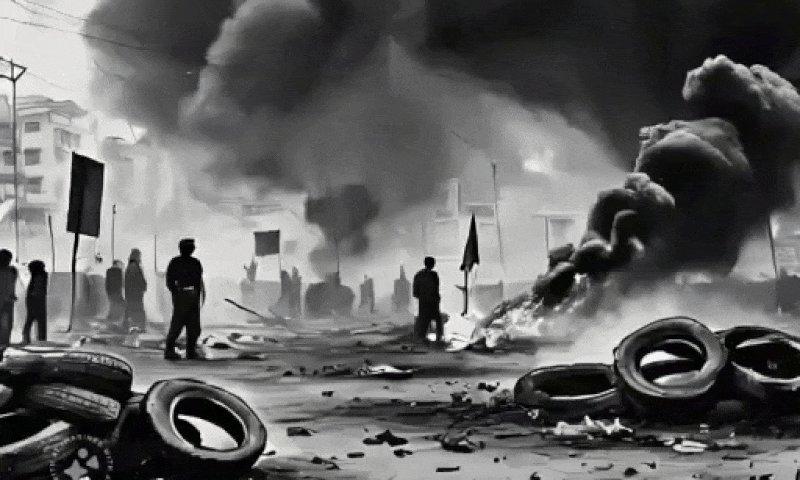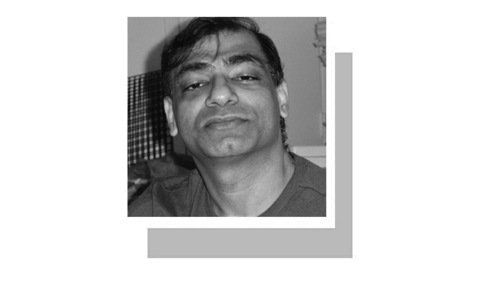
Orhan Pamuk’s book The Museum of Innocence explores the potential of objects to tell stories; for its characters they masquerade as replacements for unresolved conflicts. The reader gets immersed in a world that monumentalises ordinary things because certain memories are associated with them.
Some artists also tend to look at objects in the same way. In fact, their works appear to be entranced with the “thingness” of objects, as Bill Brown calls them in his paper titled ‘Thing Theory’. His description of this term is like a handbook for what artists tend to do with objects in their art. Brown describes this abstract quality of objects when they cease to be functional as “their force as a sensuous presence or as a metaphysical presence, the magic by which objects become values, fetishes, idols and totems.”
Some of these qualities also sum up the artistic concerns of the artists featured in a recent show at O Art Space in Lahore, titled Tear Apart. However, one must view these works with a tacit understanding that we live in a world of commodities, therefore kitsch and other ephemera of everyday life form an important and unique component of many of the works on display.
Sahyr Syed deconstructs the notion of what makes a perfect home by transforming the meaning of everyday objects; they are combined, reconstituted and reimagined so that they become ciphers for discontent in the home space. Their intimate scale makes the viewer feel as if they are privy to deeply personal and unnerving narratives.
A three-person show explores the multiplicity of meaning embedded in objects that make up the ephemera of our everyday lives
For example, ‘Safe-keep And Other Illnesses II’ is a small diptych of what appears to be all the clutter we hide in our homes that we are unable to part with. Syed painstakingly mimics and recreates this act of excessive hoarding by building, in magpie-like fashion, a miniature version of it, bit by bit. One feels as if one has entered a doll house but, far from the paradisal scenes we are likely to encounter, one is overwhelmed with a pell-mell of objects and endless piles of paper that spill, cascade and engulf our senses. Is it an archive of our clutter or a microcosmic representation of a disturbed state of mind?

Mohsin Shafi takes on vulnerabilities in a more whimsical style. It is hard to decipher whether his inkjet collage prints are a rebellious homage to kitsch with their faux baroque frames, wry sense of humour and pithy titles, or they indicate if loss and pathos couched in the bedlam of imagery and text. Either way, it succeeds in being both engaging and overwhelming.
The title of ‘Shauq-i-Deed’ (the longing to meet) contradicts the content of the image itself: a man and woman dressed in elaborate regalia look away from each other in a cornucopia of wild birds and foliage that enframe them. The eyes are missing and they seem to be “boxed in”, ironically by something that should allow them to see outside — windows. The frame of the work is unique too because it is made up of discarded fragments of frames. The act of using or representing discarded or old objects to overlap, hide and cover up also, much like the objects in ‘The Museum of Innocence’, becomes a way of memorialising unresolved emotions and their complexity.
Affan Baghpati on the other hand, “rebuilds” new objects or perhaps composites of objects with such love and finesse that they are almost reborn as little totems to memory. Through Bagpati’s intimate sculptures, one learns to appreciate the craftsmanship of readymade, discarded objects that he collects from antique shops and the design motifs themselves, that could be stand-ins for poetic metaphors in Urdu verse — grasshoppers, fireflies and the “chand” (moon) motif.

Baghpati also reveals that the meaning of objects is fluid; their beauty lies in him capturing the act of this morphing. An ornate container used for kohl/antimony or a surma daani is in stasis; “caught” in the act of morphing into a fly, much like a butterfly in the process of emerging from a cocoon. Being privy to such delicate change in the functionality of objects — is it beautiful? Is it painful to watch an object shed its former skin or function?
Towards the end of his book, Orhan Pamuk describes two kinds of collectors that collect objects. The Bashful Collector, he says, collects not for providing useful information, but “in pursuit of an answer” to unresolved conflict. Perhaps that intent is implicit in all the works here, which is why the show is aptly titled Tear Apart.
“Tear Apart” was displayed at O Art Space in Lahore from November 28 to December 7, 2020
Published in Dawn, EOS, December 13th, 2020













































Dear visitor, the comments section is undergoing an overhaul and will return soon.